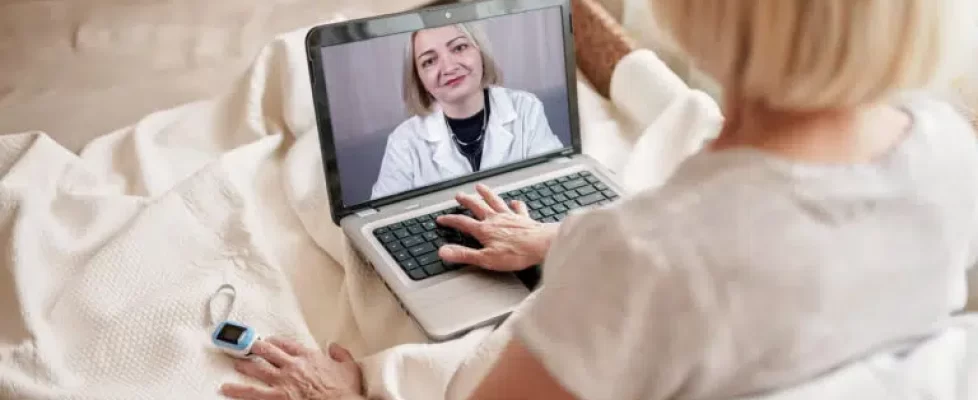Telehealth Is Proving to be a Boon to Cancer and Diabetes Care
Like many people, I was introduced to telehealth during the pandemic. I met with my psychiatrist virtually, settling onto my couch instead of hers for our sessions. But those appointments required only a conversation. It made sense that psychotherapy easily made a switch to the online world.
What’s more surprising is how often telehealth now is being used in other medical areas, such as in cancer care. Although chemotherapy and immunotherapy are typically done in person, follow-up visits and medication and symptom management can be done virtually, says Leah Rosengaus, director of digital health at Stanford Health Care in California, where 44 percent of oncology visits are virtual. For patients with cancer receiving routine treatment, that equals a lot less hassle. And for a patient with a poor prognosis, it might be even more meaningful. “The biggest gift [we can] give them is time,” Rosengaus says.
Telehealth programs made up less than 1 percent of all health care in the U.S. until March 2020, when, of course, everything changed. The pandemic restricted personal contact, and telehealth surged. (At Stanford, it went from less than 2 percent to more than 70 percent of visits in just a few weeks.) State and federal regulators relaxed rules that required doctors to see patients personally before offering care, and insurers began to cover virtual visits. Now the use of technology such as video chats, secure messaging, and even old-school phone calls to allow clinicians and patients to communicate appears to be here to stay. It has settled at 10 to 30 percent of patient appointments in many large hospital systems.
In general, the quality of telehealth care seems high. Nearly 87 percent of the time, Mayo Clinic researchers reported in JAMA Network Open last fall, an initial virtual diagnosis agreed with a later diagnosis made in person. Oncology and psychiatry proved especially accurate; ear, nose and throat and dermatology appointments—which rely more on physical examinations—were somewhat less so. A 2022 study of more than 500,000 patients found equal or better outcomes for telehealth across 13 of 16 primary care measures, such as management of diabetes and following through on flu shot appointments, when compared with in-person visits.
The quality-of-care results seem highest in the specialties that use telehealth most. Endocrinologists, for instance, like it because their patients get lab work done separately and then discuss results with doctors virtually; surgeons are using it to confer with patients before and after procedures.
Patient satisfaction with these visits is good, according to reports from large health-care systems. People say they like the convenience of virtual care—there is no travel, no parking, no child or pet care to arrange. Sanford Health, which serves a widespread rural population from its base in Sioux Falls, S.D., estimates its patients who used virtual care were spared two and a half million miles of driving in 2022.
In some cases, technology is providing clinicians with better insights into those they care for. Jeremy Cauwels, chief physician at Sanford, says an endocrinologist in his organization now carves out several hours a week for video visits with diabetes patients after discovering how much information about diet and habits he could glean from observing them at home.
People vary in how much of their home life they are willing to show, of course. Whereas some patients would never turn a camera on in the living room, others cheerfully display the insides of their medicine cabinets or refrigerators. “We’re getting a window into the patient’s lived environment that we never had before,” Rosengaus says. “That harkens back to the days of doctors and house calls.”
Virtual visits do not work for everything and everyone. In the large 2022 telehealth study, in-office patients were more likely to receive and adhere to some medications, such as statins for cardiovascular disease. Starting “a lifelong medication” is a big decision that may be best suited to an in-person discussion, the authors suggest. Another study found that patients who followed up an emergency hospital visit via telehealth rather than in person were more likely to be readmitted to the hospital.
Clearly, medical providers must fine-tune the best use of this technology. The rest of us will keep finding our comfort level (I draw the line at showing my medicine cabinet). The goal, proponents say, is not simply to increase telehealth use but to optimize it and create a good form of hybrid care they call “clicks and mortar.”

